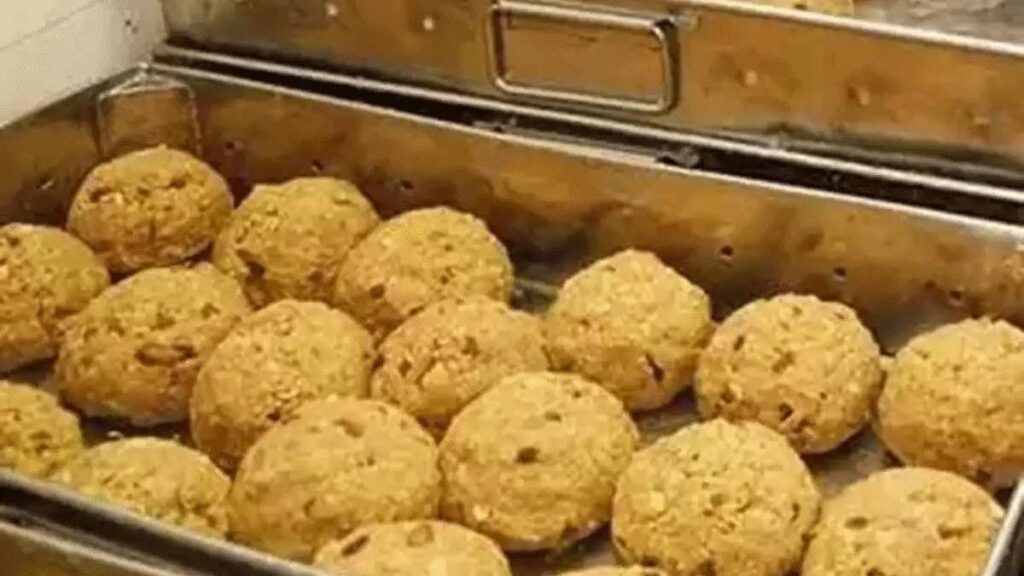The matter of Laddu Prasad of Tirupati temple of Andhra Pradesh has become a matter of controversy. Chief Minister Chandrababu Naidu has alleged that the ghee used in making Laddu Prasad has been found adulterated with fish oil and animal fat. After this incident, people across the country are discussing the ghee scam and raising questions whether the purity of the Tirupati temple Prasad has been violated? Earlier, when people lived a long life, it was said that they must have eaten good milk, curd and ghee in their life. Similarly, when a person speaks something auspicious, people say, “Ghee-sugar in your mouth.” It is said about a successful person that all his five fingers are in ghee and it is said for India that rivers of milk and ghee flow here.
But now it seems that rivers of fake milk and ghee are flowing in our country and this fake ghee has also reached the prasad of Tirupati temple. The irony is that on an average in India, action is taken against fake and adulterated ghee every 20 days, but as soon as this ghee reached the temple prasad, it became the biggest news of the country. Now this ghee scam is being discussed in every household. The question also arises that if the laddus of any sweet shop are examined, will the same fat be found in them too?
Now the food safety authority will investigate
On this matter, Union Health Minister J.P. Nadda has spoken to Andhra Pradesh Chief Minister Chandrababu Naidu and said that the Modi government will get this entire matter investigated by the Food Safety Authority of India (FSSAI).
Three main points in the report
Now the FSSAI team will investigate the report which states that pig fat, beef fat and fish oil were mixed in the laddus of Tirupati temple. Three main things have come out in the report:
This report is based on the samples of laddus and ghee sent in the first week of July. These samples were tested at Gujarat’s government lab, Centre for Analysis and Learning in Livestock and Food (CALF), located in Anand district of Gujarat. The temple committee itself sent these samples for testing and the report was made public on July 17.
The report came in July, but why was the issue raised now?
People are questioning that when the report came in July, why did Chief Minister Naidu raise it in September? Actually, the state government had raised this issue in July itself and had also blacklisted a dairy company that supplied poor quality ghee. But recently, after a statement by Chief Minister Naidu, this matter again came into discussion.
Tirupati Laddu has got GI tag
‘Laddu’ prasad has been offered to devotees at Tirupati Balaji temple in Andhra Pradesh for the past 300 years. This laddu got the GI tag in 2014, which means that this laddu can be available only at Tirupati temple.
Weight and price of laddu
Each laddu weighs 175 grams and costs Rs 50. Tirupati temple earns an income of Rs 500 to 600 crore every year from the sale of these laddus.
Use of Ghee for Laddoo
The temple committee uses 54 lakh kg of ghee every year to make laddus. This ghee is purchased from various dairies and goshalas. But due to the increasing demand for ghee, it is also purchased from outside, which increases the possibility of adulteration.
How did fake ghee reach Tirupati temple?
If pig fat, beef fat and fish oil are found in the laddus, it is possible only due to the use of fake ghee. Fake ghee is made from animal fat and their fat. Online tenders are given to dairy companies for the supply of ghee, which is managed by the temple committee. In 2019, Andhra Pradesh Chief Minister Jagan Mohan Reddy appointed his relative Y.V. Subba Reddy as the chairman of the Tirupati Tirumala Devasthanam Board, which is responsible for the purchase of ghee.
What is used to make fake ghee?
500 grams of animal fat, 300 grams of refined palm oil and fish oil, 200 grams of real ghee and 100 grams of chemical are used to make fake ghee. This gives fake ghee the aroma and grainy texture of real ghee. The police and governments are unable to catch even 5% of the fake ghee made every year in India and this ghee easily reaches people’s homes.
This matter has not only raised questions on the sanctity of the temple but has also highlighted the serious problem of fake ghee trade in the country.

